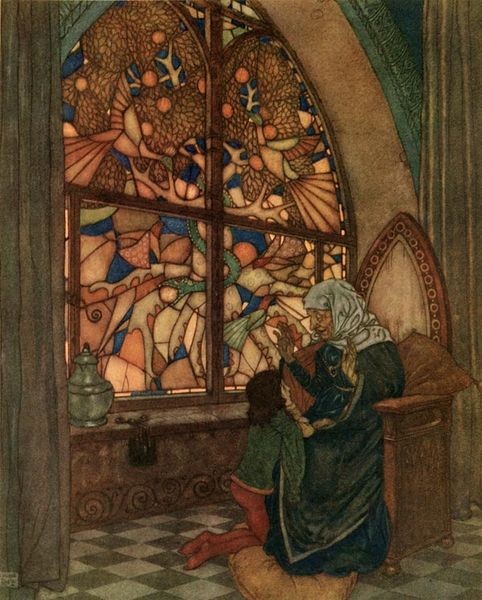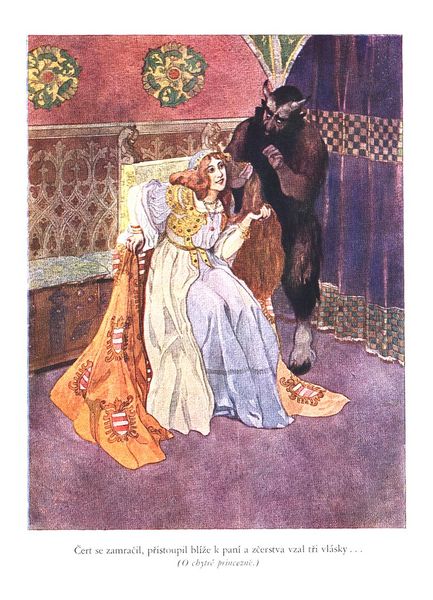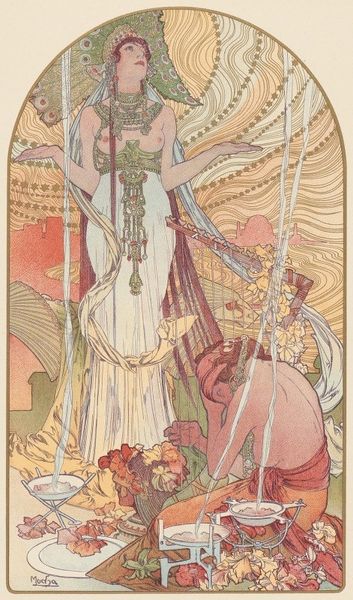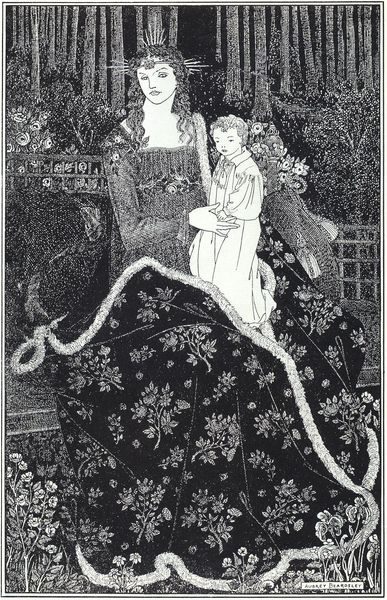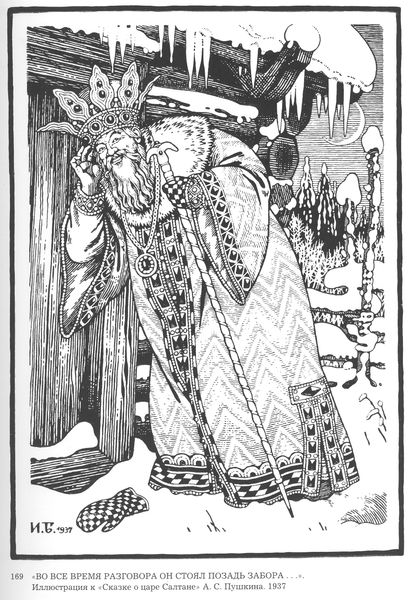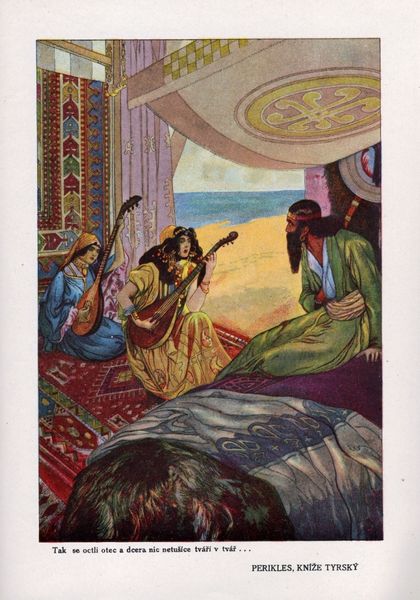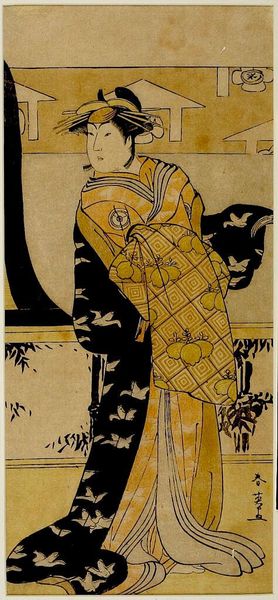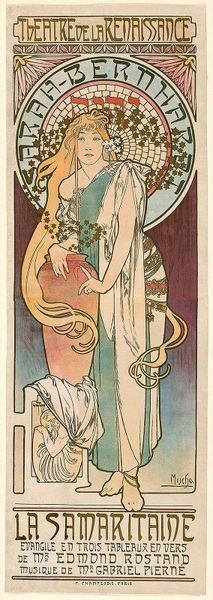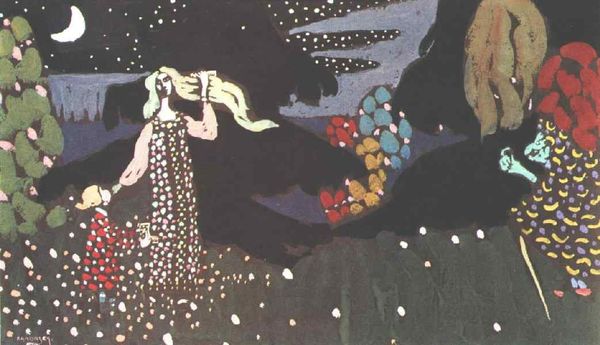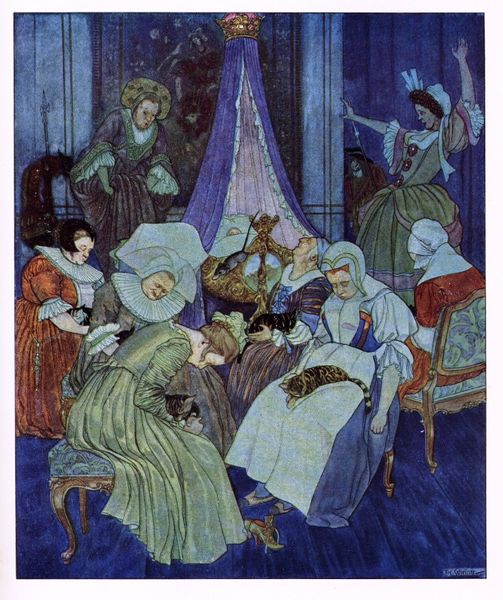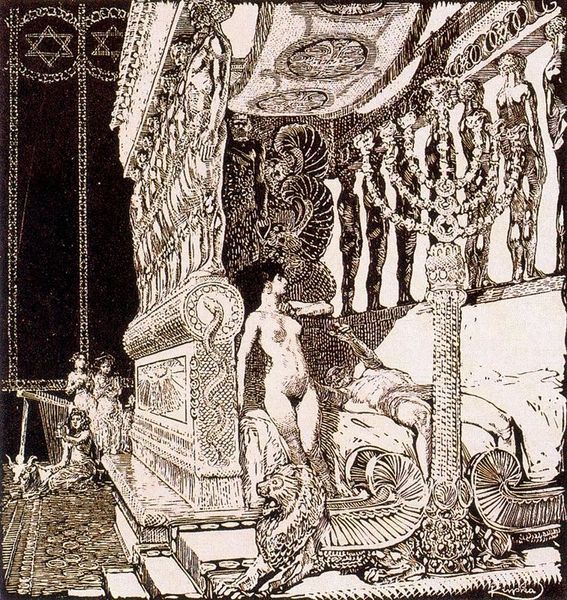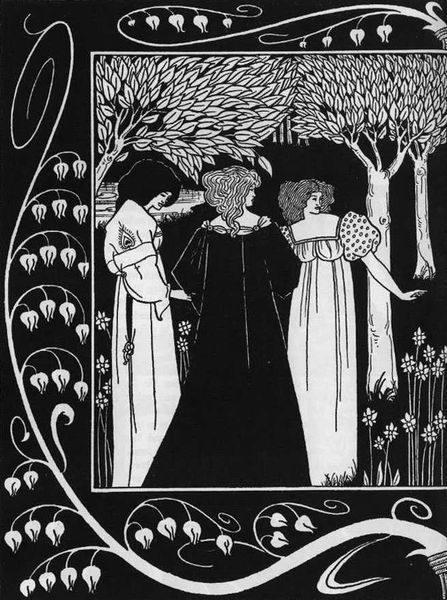
painting, watercolor
#
art-nouveau
#
narrative-art
#
painting
#
figuration
#
watercolor
#
symbolism
#
mixed media
#
watercolor
Copyright: Kay Nielsen,Fair Use
Curator: Here we have a watercolor and mixed media piece entitled "Tell Me the Way Then" by Kay Nielsen. The artwork showcases Nielsen's skill in using delicate washes of color and intricate linework. Editor: It's melancholy. Immediately, I see two figures steeped in what feels like an intense emotional exchange. Their garments feel significant. The standing figure seems bound to a societal construct. Curator: Considering Nielsen's illustrative work within the context of the late 19th and early 20th centuries is crucial. One can appreciate the process by which printed works gained traction alongside advancements in commercial color printing which really brought art like this into the homes of more and more people. He uses this commercial approach to address class in a way that is critical but also accessible. Editor: Precisely! We're drawn in to examine class differences, power dynamics between genders and also potentially comment on identity through symbolism embedded within a larger narrative. This narrative structure enables critique through fantasy as a lens to magnify social issues. Curator: Right. His labor involves using industrial production and print culture which is not merely about art making itself but about bringing it to consumers via commercial production. These are hand-painted, reproduced, then bought en masse, if we can assume that they sold successfully. This opens avenues into discussions about labor economics. Editor: That relationship to commerce raises intriguing questions about gender dynamics, who are these women and what narratives do they enact when placed within a context of consumer culture? Curator: The materials and method used contribute to accessibility. Commercial prints were sold broadly making visual art consumption commonplace within working-class homes at this time. Editor: Absolutely! Analyzing the symbolism allows unpacking Nielsen's message regarding contemporary societal issues and expectations of its period, creating discourse about both artwork and society itself through illustration. Curator: This piece really underscores how so-called "high art" actually relies so heavily on modes of production more aligned with everyday manufacturing or craft work. Editor: Ultimately, I find this speaks volumes not only through its visual language, but by enabling important sociopolitical dialogues pertinent in art discourse.
Comments
No comments
Be the first to comment and join the conversation on the ultimate creative platform.
